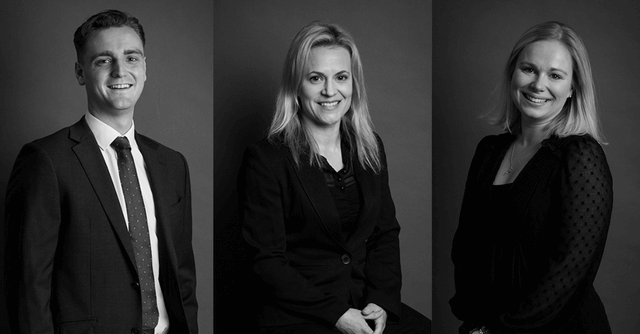
21 October, 2024
EG Podcast: The Future of Living: Delivering Multi-generational Development
Learn more
6 August, 2024 · 4 min read
In spring 2024, representatives from Montagu Evans NextGen cohort working across the residential sector sat down with key players in the market to discuss current hot topics in the industry.
The focus of the discussion oscillated between two critical topics: Biodiversity Net Gain (BNG) and Permitted Development (PD). Each brought its own set of challenges, opportunities, and uncertainties to the forefront of the conversation.
BNG requirements, a key component of the Environment Act 2021, have now come into force. As of February 2024 for major developments and April 2024 for minor developments, all planning applications must deliver a minimum BNG uplift of 10%, measured using a statutory biodiversity metric. This landmark legislation aims to ensure that new developments leave the natural environment in a measurably better state than before.
However, integrating BNG into development projects poses significant challenges. Already grappling with high interest rates, soaring construction costs, and existing planning obligations, developers now face the additional complexity of meeting the 10% net gain requirement. This has raised challenges surrounding the viability and delivery of new projects.
The Discussion: The roundtable discussion began with an in-depth overview of BNG and its three primary types: watercourses, habitat areas, and hedgerows. Participants delved into the implications of providing a 10% uplift for each category and how this might impact sites encompassing all three elements. Whilst feasible, it poses significant challenges, especially for sites rich in all three features. The dilemma of providing dual uplifts for intersecting features, like a river serving as both a watercourse and a habitat area, underscored the nuanced nature of BNG implementation.
The conversation covered a number of key points:
Council and Policy Changes: Council policies emerged as another layer of complexity in the BNG landscape. With the concept of BNG still in its infancy, there are varying levels of understanding, continuity and clarity across different councils, with some contemplating a steep increase in uplift requirements to 20%. This sparked a discussion on the feasibility of sites providing the 20% uplift and potentially selling the excess 10% to other sites struggling to achieve the requirement. Participants also pondered whether developers with multiple sites could share credits across their developments.
Management of BNG Sites: The question of land management post-sale loomed large. Who would oversee the maintenance of BNG obligations tied to a 30-year? The consensus leaned towards local authorities, underscoring the need for robust governance mechanisms to ensure long-term ecological stewardship.
Experiences with BNG Implementation: Reflecting on past experiences, the participants shared varying degrees of engagement with BNG, with a 10% uplift being the norm, particularly on brownfield sites. Achieving this level of uplift was manageable, particularly for brownfield sites with little existing biodiversity – a positive outcome, with the majority saying that 10% was a very achievable level. However, there was discussion surrounding sites with significant biodiversity requirements and how these sites would become less desirable due to increased viability concerns.
Running the Numbers: The timing of BNG considerations in the development process elicited mixed responses. Some developers are factoring BNG into their bids early on, while others are not considering it at all due to uncertainty about how to determine the necessary costs. Despite these differences, there was a broad agreement that BNG is becoming a significant part of the development process, necessitating serious consideration due to its potential impact on viability. Discussions lead to the conclusion that as there is more certainty with what is involved, it will be easier to put a cost against BNG within appraisals.
Ellie Hagart, Surveyor at Montagu Evans, commented:
“It is great to see a national commitment to BNG but discussions from the group led to concerns over issues surrounding deliverability and the policing of the policy. The group highlighted the need for a more structured approach to ensure effective implementation of BNG across all developments.”
The conversation then pivoted to Permitted Development (PD). There was a debate over the potential to revitalise underutilised spaces versus the challenges it raises, such as inadequate lighting and challenging floorplates. With the demand for residential space higher than ever, there was no doubt that PD would provide an excellent way to provide some much-needed residential stock. However, the ongoing issues of build/conversion costs remain a concern for developers.
Henry Revill, Development Manager at Jansons Property, commented;
“Within our industry, there’s a big emphasis on cost-efficiency in construction at the moment, and Permitted Development emerges as a pivotal solution. By facilitating the conversion of offices into residential spaces while adhering to existing structures, it presents a compelling avenue for fiscal prudence.
“Moreover, its commitment to adaptive re-use underscores its alignment with sustainable practices, affirming the adage that the most sustainable building is one that already exists.”
The roundtable discussion underscored the growing importance of BNG in the development process and the need for clearer guidance and consistent policies from councils. While there are significant challenges, particularly regarding existing biodiversity and viability, the industry is beginning to adapt and integrate BNG considerations more seriously.
The conversation also highlighted challenges towards PD and retrofitting, with developers cautious about the practical challenges and viability of such projects. However, the overall messaging of the event was positive surrounding this alternative route to housing delivery.
On reflection, those attending the event had a very positive approach to both BNG and PD, with all of the challenges being discussed falling into the category of teething issues rather than genuinely detrimental challenges.

19 September, 2024
by Jon Neale
Learn more

2 October, 2023
by Kate Brennan
Learn more

20 July, 2023
by Harry Charman
Learn more